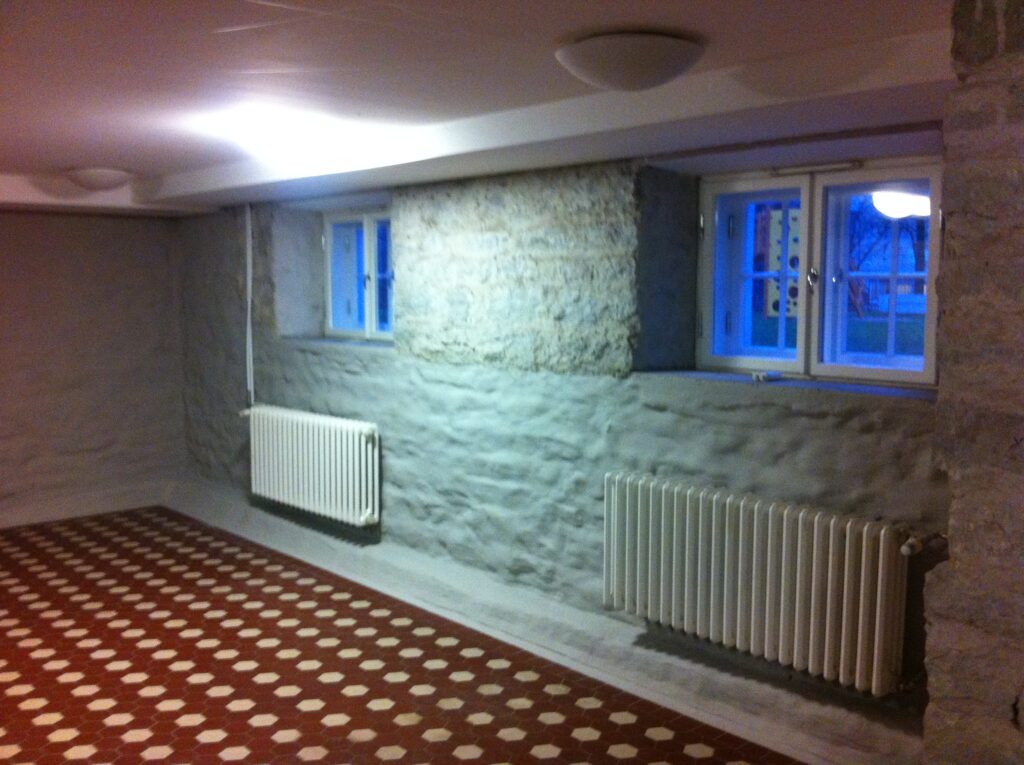
We offer renovation and waterproofing of basement with moisture and salt damage. Mainly we use waterproofing systems and renovation plasters and mortars from the German factories Schomburg GmbH and Köster Bauchemie AG, which meet the requirements of the WTA (International Association for the Science and Technology of Building Maintenance and Monument Preservatio).
Internal waterproofing of existing buildings must be done with mineral waterproofing systems. They have excellent adhesion properties to mineral surfaces and will not subsequently separate from the substrates due to wetting, dampness or water pressure from the negative side.
Before installing waterproofing systems, the substrate must be prepared, for which all loose and decayed layers must be removed either abrasively with a sandblaster or by grinding or using ultra-high pressure water. High-quality waterproofing materials can only be applied to those substrates that are solid and sufficiently strong and free from substances that impair adhesion. Old soft plaster layers must be removed, joints cleaned and all loose particles removed. The first section of work is filling the joints. A waterproof mortar with a high compressive strength (over 25MPa) is chosen to fill the joints. After the joint mortar has hardened, the entire surface is ready for the installation of internal waterproofing. Depending on the system, the use of a primer is sometimes necessary, but under certain conditions it is allowed to install the system without priming. Regardless of the use of the primer, it is recommended to always use salt-binding substances, because these substances strengthen the substrate and reduce the mobility of salts.
As a waterproofing layer, rigid mineral waterproofing rods resistant to negative pressure are used. For example, KÖSTER NB 1 Gray or Schomburg AQUAFIN 1K. Installation of waterproofing is ALWAYS performed in two layers. After drying for at least 7 days, the waterproofing layer can be covered either with a renovation plaster system (recommended by WTA certified), which has the advantage of binding the crystallizing salts that form on the interior surfaces of the basements, which significantly extends the life of the entire system. If the risk of salts is not high, you can also use ordinary cement-based plasters intended for outdoor conditions. Gypsum-based plasters and putties, as well as water vapor-impermeable paints, must not be used. The entire system must let water vapor through, i.e. be so-called breathable.
Along with the waterproofing of the walls, the waterproofing of pipes and other conduits is also carried out. Both the KÖSTER and SCHOMBURG factories have various solutions and systems for this purpose.
Cooperation partner Primostar OÜ supplies us with most of the necessary waterproofing materials.
